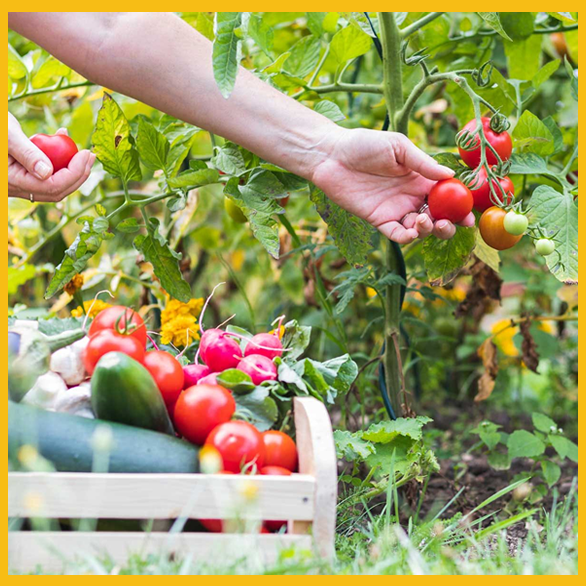Hotline Question May 2021
Question: I heard you are not supposed to plant cabbage and broccoli with tomatoes, like I did in my vegetable garden last year. Can I plant tomatoes in the same bed again this year?
By Sharon Zornes
Answer: You may be able to grow the three vegetables at the same time during the spring if you live near the coast but it would be difficult to grow them together during different seasons or at an inland location. The tomato needs long, hot days and warm soil to produce the best quality fruit. It and other warm season plants grow best and produce the best quality crop when average temperatures are 65°F-95°F. Tomatoes are usually planted during spring and summer. They should not be planted until all danger of frost is past. Tomato plants can be injured by the lightest frost and do not thrive in low temperatures.
 By comparison, cabbage and broccoli are hardy plants that are not damaged by light frost. They are cool season vegetables that grow best and produce the best crop when average temperatures are 55°F-75°F. They are usually planted from fall to winter in our area. To get the best production from your garden, crops should be planted at the appropriate time for your planting zone and bioclimate. Following is a link to a planting guide published by the UC Cooperative Extension which focuses on the coastal and inland regions of San Diego County.
By comparison, cabbage and broccoli are hardy plants that are not damaged by light frost. They are cool season vegetables that grow best and produce the best crop when average temperatures are 55°F-75°F. They are usually planted from fall to winter in our area. To get the best production from your garden, crops should be planted at the appropriate time for your planting zone and bioclimate. Following is a link to a planting guide published by the UC Cooperative Extension which focuses on the coastal and inland regions of San Diego County.
Growing tomatoes and other vegetables in the same place, year after year, can lead to a buildup of certain pests and diseases. It is recommended we rotate crops in our gardens. For the best results you should follow a four-stage rotation of your crops. The goal of the rotation is to grow plants from four different families, one after another, in a single location.
Rotating the crops in your vegetable garden can be effective against a buildup of certain pests and diseases. By moving crops to a different area of your garden it helps isolate harmful pests and pathogens from their food source and reduces the chances that they will harm a susceptible crop when it is replanted later. Practicing crop rotation can reduce soil borne problems, particularly harmful nematodes and root diseases such as verticillium wilt. Both problems can increase when crops in the same family are grown in the same location year after year. Tomatoes which are susceptible to verticillium wilt should be rotated with different plants, especially broccoli. Evidence has shown that growing broccoli will reduce the amount of verticillium in the soil.
The following link offers more information and suggestions regarding crop rotation strategies in the home garden. Choosing a suitable rotation schedule may be challenging depending upon the type of pest or disease you are trying to manage. Within the rotation it is important to include a “fallow” period (when no plants are grown) to prevent some nematodes from feeding and reproducing.
For additional information on vegetable gardening, visit our website: https://www.mastergardenersd.org/beginning-vegetable-gardening
Get free gardening advice on the Master Gardener Hotline, (858) 822-6910, or by email at help@mastergardenerssandiego.org
Resources
UC Master Gardener Blog, Contra Costa County, Tomato Rotation Minimizes Soil-Borne Problems
The California Garden Web, Vegetables & Sustainable
UC Master Gardener Information, Napa County, Crop Rotation
Zornes is a member of the UCCE San Diego County Master Gardener Class of 2020. Get free gardening advice on the Master Gardener Hotline, (858) 822-6910, or by email at help@mastergardenersd.org. Due to COVID-19, the Master Gardener Hotline staff members are working remotely to ensure they respond to your questions in a timely manner.

